Rare Steiff Wool Felt Stork Bird Adebar ID
$129.00 Original price was: $129.00.$90.30Current price is: $90.30.
- Quality You Can Count On
- 100% High-Quality Guarantee
- 7 days free returns
- We take quality seriously.

I am sure you have heard the expression, used metaphorically when speaking about a person, “He’s a rare bird.” Well, here, for your adoption consideration, is LITERALLY a rare bird! This is the smallest of the three Adebar stork brothers, none of whom was made beyond the 1960s. Because Adebar retains only his button, I can’t be precise. However, because his eyes are glass and his button is the earlier style of raised script, I believe it is safe to say that he was in either of the two earliest series. If Adebar was in the earliest series. his article number was 1117, and he was made between 1953 and 1958. If he was in the next series, his number would have been 1017,00; that series was made in 1961 only!
Adebar’s button is located in his left black wing segment, on the innermost feather. I show it to you as an enlarged inset in my fifth composite image, and I pointing to in context, where I you can see a tiny sliver of silver showing on Adebar’s underside.
The ”17” in Adebar’s article number denotes his catalogued size in centimeters, measured to the top of his head. He is just a bit shorter than that, measuring 16.5 centimeters tall, or 6 1/2 inches.
Adebar’s wings are made of two parts, which is why I referred to his button location on his wing “segment.” The three black wing feathers are a continuation of Adebar’s wings from the white scalloped front parts of his wings. Those actual scalloped feathers are individual cut-out pieces of felt, in front of which his wings are further defined with airbrush-defined scallops.
Actually, this is a good place to tell you that I believe that Adebar’s condition is very good. I have rated him a notch down from “excellent” because the gray airbrushing behind those front “scallops” is faded. I know that because Adebar’s near mint brother, who lives in my vitrine, has darker airbrushing on his wings. If I had nothing to compare this guy with, I don’t know whether I would have recognized this, because you can see the airbrushing on Adebar’s wings; it is not as if the gray airbrushing were totally absent.
Speaking of color, I believe Adebar’s white main color, which is not SNOW white, is still close to what it was originally; I don’t believe it ever was pure white; I am basing this opinion in part on his vitrine-brother’s coloring, which is identical. This Adebar’s black parts seem to be their original color. That is why I used a red background in my photos. Adebar’s tail would be swallowed up by the black background I use most of the time.
Now that I am on that topic, I could not manage to render the light orange color of Adebar’s plastic beak and his legs absolutely perfectly, and this variance from how that orange color looks in person is not consistent among all my images. I would say that the closet I managed for the color of his legs is that same right half of my composite fifth image where I am showing you his button. My best rendering of Adebar’s (plastic) beak is in my first image. Of course, I have no idea how he looks on your monitor.
The orange coloring of Adebar’s legs is noteworthy because of its nice condition. The lacquer is not pristine, but it is pretty darn close! Compared to the paint on wire-legged birds in general, Adebar’s coverage is WELL above average!
Again, speaking of Adebar’s legs, I want to point out what I would characterize as a slight “hatching” defect. By using that expression, I am saying that this issue, if it is even serious enough to be called an “issue,” is one which stems from the way Adebar was put together at the factory. You can see (best in my second composite) that he has a little arch-shaped “ridge” in his chest. That is the top part of his legs and feet, which are actually one upside-down elongated “U”-shaped structure. You can see that Adebar’s stance is slightly leaning forward, with his legs not exactly perpendicular to the ground. The reason for this is that the seamstress who put him together inserted his legs with the top of the “U” more forward in his chest. If Adebar’s legs were at right angles to the ground, I believe that the top of the structure would be further embedded in his body. Because this anatomical issue occurred at the factory, I don’t hold it against Adebar in assessing his condition. Not only that, but the angle of his legs has absolutely NO effect on his stance, which is stable; his feet sit firmly and evenly and on the ground.
Adebar’s slightly forward stance DECEMBER be the reason why his measurement is just a little short of his catalogued height. On the other hand, how close any Steiff animal comes to the catalogue is usually not exact anyway. These are hand-made items, and, probably more often than not, a given Steiff animal varies somewhat from its “official” size; just look at my other animals. 🙂
I just want to remind you of the way I rate the condition of my Steiff animals. When I say that Adebar’s condition is “very good,” I am rating him absolutely, using the same criteria I use for all animals, no matter when they were made. Others use the expression “for his age,” which is meaningless to me. The way to bring his age in to the analysis is to say that Adebar is in very good condition DESPITE his age (and play), which is at least 60!
I can’t think of anything else to tell you, but if you are a Steiff bird person, Adebar should definitely be in your collection! Of course, if you have any questions, please write.
WHATEVER YOU DECIDE TO DO ABOUT ADEBAR OR ANY OF MY OTHER STEIFF ITEMS, PLEASE BE SURE TO SEE THE ARTICLE I HAVE WRITTEN ABOUT STEIFF ID FRAUD—INCLUDING COUNTERFEIT CHEST TAGS—(AND OTHER IMPORTANT INFORMATION FOR COLLECTORS). YOU WILL FIND THE LINK ON THE BOTTOM RIGHT OF MY SHOP HOME PAGE UNDER “FAVORITE LINKS.” IF YOU HAVE NOT LOOKED AT IT RECENTLY, I UPDATED AND EXPANDED IT IN DECEMBER, 2022.
| ITEM ID | rl-2652 |
|---|---|
| COLOR | Black, White |
| ITEM TYPE | Vintage |
| FINE PLUSH AGE | Post 1950 |
Be the first to review “Rare Steiff Wool Felt Stork Bird Adebar ID” Cancel reply
Related products
Cats
Rare Sweet 17 CM Steiff Black Cat US-Zone Flag For Halloween And All Year Round 1950-1955 Only!













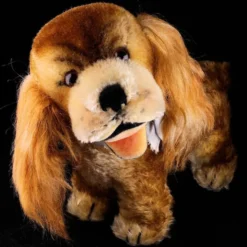

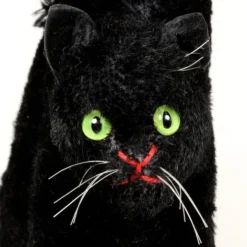
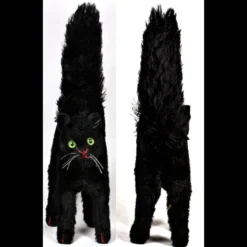
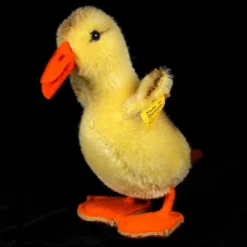
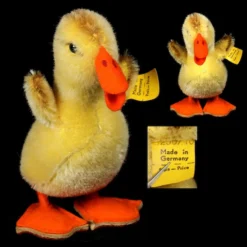

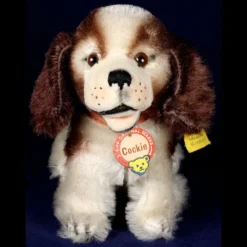
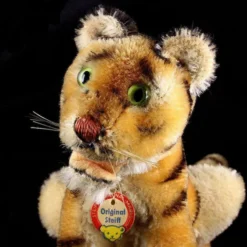


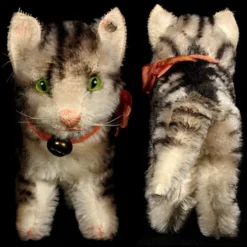


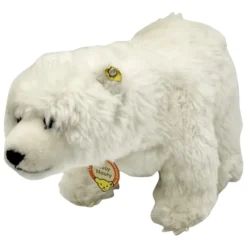
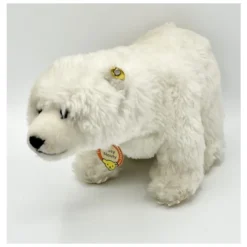
Reviews
There are no reviews yet.